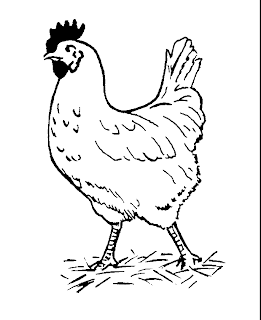1. Car
2. Dog
3. Cat
4. Pen
5. House
6. Tornado
7. Egg
8. Shoe
9. Chicken
10. Bag
In class, teachers always tells us what to study, but did you notice that they never taught us how to study? What I observed in students while studying, whether it is for an exam, a game show, or just for the sake of knowing something new, is that we usually do a process called rote learning.
Rote learning is the process of repeating a word, a phrase or a sentence again and again until it get stuck in your mind long enough for you to remember it the next day. Now this has its advantages, but first let me just tell you about some other forms of learning, the first one being visual mnemonics.
Visual mnemonics got its name from how you use it. Visual meaning you use images and symbols to create a mental picture in your mind, and mnemonics which is basically an umbrella term for all the little tips and tricks that may aid you in memory retention (e.g ROYGBIV for remembering the names if the rainbow).
Now what we do in visual mnemonics is very simple, and it only requires you to do two tasks;
The first one, being able to form a mental image of the word in your head.
Second, is to associate that image with another picture or symbol already in your head.
Sounds complicated? Let us just use the example above;
Above are ten numbers from 1 to 10. Now what we are going to do is to associate each number with a specific symbol. For number one let's use the image of a bun, for no.two, a shoe, no. three is a tree, for four, a door, five is a hive, six are sticks, seven is heaven, eight is gate, nine is a line and the number ten is a hen. Easy right?
Now next is we associate. To associate is pretty simple, for number one, our image is that of a car. So let's find a way to see how a car and a bun can associate. How about a car with buns for a windshield? See? The crazier the association, the easier it is to retrieve it later on. Don't just simply take a car with a bun on top. Do this for the next 9 items and you're good to go.
But the question is not how, but why visual mnemonics work? And why is it better that rote learning? Well to answer the first question, it is because of the brain's inherent quality to prefer visual imagery over words. Meaning that the more vivid the imagery, the more the brain pays attention to it. And this is also the reason why charts and graphs work so well with students.
But does this make visual mnemonics better than rote learning? It depends really, for one thing visual mnemonics takes longer to prepare, while rote takes up virtually no preparation at all. Secondly visual mnemonics works better with lists and bullets, you can't really associate the whole history of the Philippine's with just one image can you? And finally, to learn a visual mnemonic, one must memorize it first usually using a process called rote learning. So you can't exactly call it superior.

There are many tricks to memorize the things. One of the most effective ones is mnemonics. I have found this article pretty useful.I would like to share it many other students. Thanks for sharing.
ReplyDeleteRegards,
Ashok
Competitive Exams Study Material